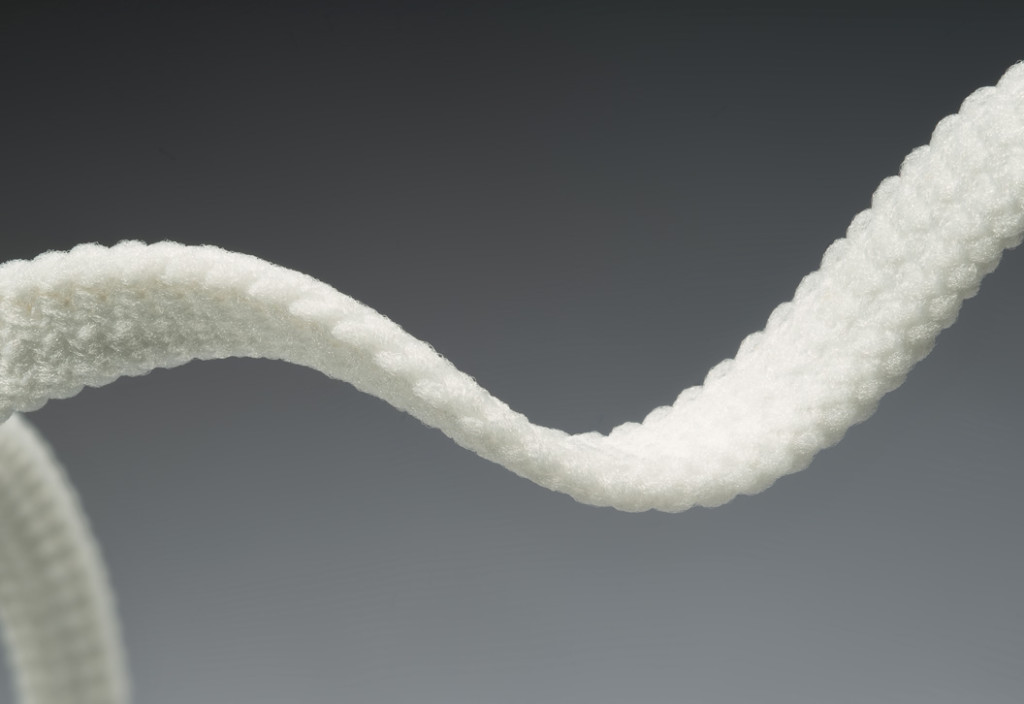
IFAI Advanced Textiles Conference medical track covers innovations in textile engineering.
The first day of IFAI’s Advanced Textiles Conference Oct. 13-14 covered a range of innovative new technologies and products in the field of medical and biomedical textiles. It may take many years, in some cases, before these technological breakthroughs are available commercially, since the process for FDA approval is arduous and expensive. But some innovations are already available and many others are perched on the horizon.
On the fiber level
Dr. Laura Frasier of SNS NanoFiber Technologies presented “Advances in Medical Nanotextiles,” a discussion of new nonwoven nanofiber mats that could be used for skin decontamination, hemostats, wound dressings, cell culture devices, and tissue engineering scaffolds. In tests for skin decontamination, for example, washing with soap and water was compared to using the mats to remove sunscreen from the skin. The soap and water method actually caused the sunscreen to go deeper into the hair follicles in the skin, but the mats almost completely removed it.
Using the mats for wound dressing and hemostats is especially advantageous because the material doesn’t have to be removed. Typically, removing dressings can cause a wound to open and bleed again. Additional applications in pharmaceutical cosmetics have also been explored.
Bob Martin of ITW/LPS/Professional Brands and MiniFIBERS Inc. in partnership with MiniFIBERS Inc., presented new information about their technology to create metal detectable fibers for the food processing industry, including how the companies are loading additives into these fibers and spinning them, as well as the practical application for this new material. They are also working on x-ray detectable fibers for medical applications, “which could have thousands of uses,” in filtration, medical and other markets, Martin said.
Sensor technologies
“The Public Healthcare Impact of Wearable Technology and Textile-Integrated Sensors” was presented by Auli Sipila of Clothing+. Health monitoring for sports and the consumer market and its wider implications in healthcare and wellness were explained, including information about the Philips Heartcycle vest for patients with cardiac disease. The company’s focus is in “providing a bridge between the electronics and textile industries,” she said, in particular providing solutions to assist an aging population with consistent and reliable follow-up, rehabilitative care.
“The Development and Applications of E-Textiles,” presented by Kazuaki Shibata of Shibata Technotex Co. Ltd., discussed current research and development of layered textiles woven with metallic threads and fibers, which can be used as conductors and electrodes. Since most e-textiles have been designed for a specific use, theirs is meant to be customizable. Illustrations provided by the company depicted interactive, sensor textiles that appear to be like any textile product (a bed mat or a floor mat, for example) so that they are not intrusive in a patient’s environment.
New research has created not only touch sensors that relay critical information, but an “audible fabric” that can function as a sound speaker.
Getting approval
“The Lifecycle of FDA Approval,” presented by Melody LaBeau of Medtronic gave an overview of the structure of the FDA and what you need to know about the approval process from the idea to market approval, from a device manufacturer’s point of view.
“It’s a lot of work,” LaBeau said, but the FDA is ready and willing to help companies work through the process, and she urged companies to contact the FDA early to save time and money in the long run. She also noted that the FDA is now creating a pathway to global product safety, which is a very positive move for the medical device industry.
What the future could hold
Chris Glasby of Secant Medical Inc. presented on “Existing Textile Technology Matched with Material Innovation,” addressing the use of advanced biomaterials and the engineering challenges faced when matched with current textile processes. Glasby pointed out that most surgery today is technology from the 1970s and 1980s, because the process to research, develop, test and get new technologies approved is a long one.
However, the goal for the future is regenerative medicine, which deals with replacing, engineering or regenerating human cells, tissues or organs. The company has developed a platform named Regenerez®, a bio-elastomer that Glasby called “the next disruptive technology.”
He stressed that companies need to collaborate to move forward. “It’s all about synergies. We all work with each other,” he said. “The textile industry is just evolving. We have a bright future ahead.”
Oct. 14 sessions will cover new techniques in woven narrow fabrics for biomedical and medical; regulatory hurdles for medical devices; and implantable medical devices for drug delivery. Coverage of these sessions and others in the Advanced Textiles Conference will be provided on this site.
Janet Preus is senior editor, Advanced Textiles Source and Specialty Fabrics Review.

 TEXTILES.ORG
TEXTILES.ORG


